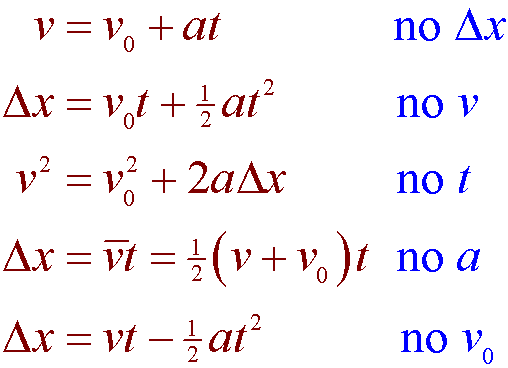Beautiful Work Kinematics Equations Of Motion

Take the operation in that definition and reverse it.
Kinematics equations of motion. These three equations of motion govern the motion of an object in 1D 2D and 3D. First Equation Of Motion. Displacement s initial velocity u final velocity v acceleration a and time t.
Kinematics is a branch of physics and is defined as the relationship between space and time. Consider a body moving with initial velocity u subjected to a uniform. You are encouraged to read each problem and practice the use of the strategy in the solution of the problem.
Kinematic Equations of Motion If an object starts with velocity u and after some time t its velocity changes to v if the uniform acceleration is a and distance traveled in time t is s then we obtain the following kinematic equations of uniformly accelerated motion. Kinematics equations are a set of equations that can derive an unknown aspect of a bodys motion if the other aspects are provided. It ignores the cause of the motion caused by space and time.
Kinematics equations are used to identify the unknown bodys motions. Displacement denoted by Δx. Equations of motion for uniform acceleration.
We show that color-kinematics duality is a manifest property of the equations of motion governing currents and field strengths. Calculus is an advanced math topic but it makes deriving two of the three equations of motion much simpler. For the nonlinear sigma model NLSM this insight enables an implementation of the double copy at the level of fields as well as an explicit construction of the kinematic algebra and associated kinematic current.
Kinematics equations are the constraint equations of a mechanical system such as a robot manipulator that define how input movement at one or more joints specifies the configuration of the device in order to achieve a task position or end-effector location. These problems allow any student of physics to test their understanding of the use of the four kinematic equations to solve problems involving the one-dimensional motion of objects. The equations of motion which you mentioned in your post hold true if and only if acceleration is constant.













